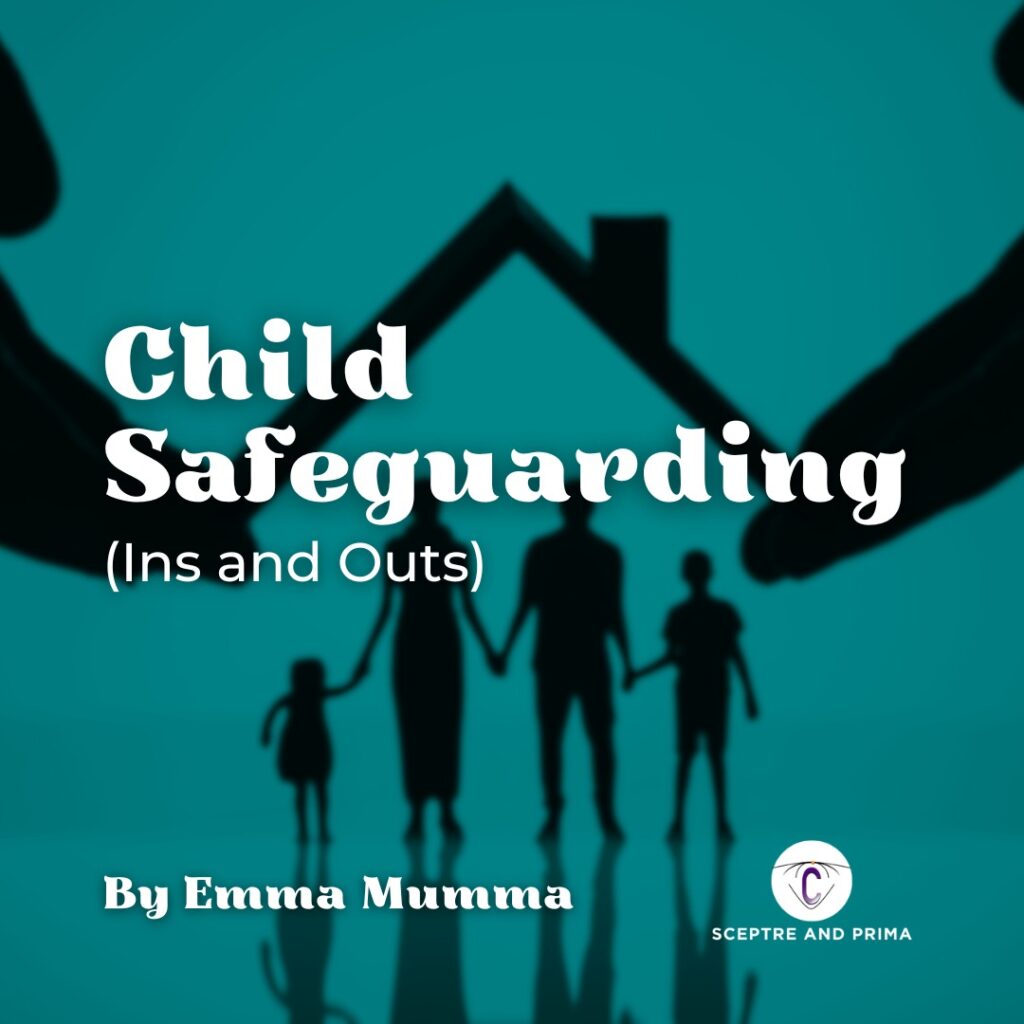Safeguarding and protection have always been used interchangeably but they aren’t synonymous. Child safeguarding could be defined as the prevention of harm to children’s physical and psychological health and well-being while creating conditions that promote healthy development.1 They describe the features, systems, and processes that must be in place to ensure that child safety is fully and effectively integrated into organisations and it is especially important for organisations that work in humanitarian crises, conflict, and post-conflict situations, where many children are likely to be in extreme physical and emotional distress.2
A child is someone who has not attained the age of 183 and every child has the right to be protected from abuse, neglect and exploitation.4 An overall approach to child safety is based on understanding the risks to children posed by the organisation (its staff, programs, and operations).5 Families, communities, governments and non-governmental organizations (NGOs) together play a vital role in realizing children’s rights to protection. Children can also play an important role in protecting themselves from abuse and exploitation, in accordance with their evolving capacities.
Child safeguarding is the responsibility that organizations have to make sure their staff, operations, and programmes do no harm to children, that is that they do not expose children to the risk of harm and abuse, and that any concerns the organization has about children’s safety within the communities in which they work, are reported to the appropriate authorities.
“Do no harm” principle in relation to safeguarding refers to organizations’ responsibility to minimize the harm they may be doing inadvertently as a result of their organizational activities.6 The principle mandates as a key priority that community-based child protection groups do no harm to the children that they aim to protect is a principle of obvious and paramount importance, but it becomes even more critical and challenging in the case of sexual exploitation and abuse.
Safeguarding follows four standards which are policy, people, procedures and accountability. A policy confirms the organizational commitment to promoting the well-being of children, preventing abuse and creating a positive environment. The people standard communicates the responsibilities and expectation of staff, associates and partners to the organisation. Procedures are systemic processes of planning and implementation of measures put in place which should be accessible and appropriate for all children. Finally, measures and mechanisms for monitoring and reviewing upward and downward accountability have to be firmly in place.
Safeguarding is a two-way street that protects not only the child but also the organisation and its employees. Organizations should undertake a variety of trainings with the aim of protecting children. This should be done with the same breadth and intensity of their work. However, even with the most robust child safeguarding policies and procedures, abuse may still take place from within your organization. At that point, it is how your organization responds that is crucial for the child and for the organization.
Children are safer and risks are minimal when every individual in an organisation is required to receive clear instructions on their obligation to prevent and report abuse, as well as the consequences if they do not comply.7 Acknowledging risks and implementing measures to address them is fundamental to organizations’ strategies and governance. The more this is recognized, the more risks can be prevented. To achieve this your organization needs to allocate who is the appropriate designated person/s to act as the focal point in an organization to receive and manage any safeguarding concerns and subsequent inquiry/investigation. Additionally, and most importantly, organizations must master the art of recruiting safely.
All agencies whose staff come into contact with children in their daily activities, and / or who provide services to adults who are parents, must ensure their staff are familiar with their codes of conduct and policies. The agencies and the professionals themselves must ensure that they are competent to understand the risk factors and recognize children in need of support and / or safeguarding. A clear line of accountability and governance within and across organizations for the commissioning and provision of services designed to safeguard and promote the welfare of children;
In conclusion, it is paramount to note that we are mandated by the Convention and the Charter to protect children in all environments and ensure as much as possible no harm comes to them. It is crucial to realise that we must not let harm come to children but rather ensure they their best interest is looked out for in all fronts.
Organisations must understand that child safeguarding is very crucial but not only to protect the children but the organisation’s staff, employees and partners. Further, safeguarding ensures that organisations recruit safely, put in place mechanisms for accountability and monitoring. Finally, organisations should not only have policies on paper but also ensure that the policies are indeed followed and work for them.
- https://childsafeguarding.com/resources/ ↩︎
- A guide for creating a Child Safe Organisation Commission for Children and Young People, 2023. ↩︎
- UN CRC Article 1, ACRWC Article 1 ↩︎
- UN CRC Article 19, ACRWC Article 16 ↩︎
- Keeping Children Safe, Child Safeguarding Standards and how to implement them. ↩︎
- https://www.unicef.org/serbia/en/ethical-guidelines#:~:text=for%20interviewing%20children-,1.,and%20grief%20from%20traumatic%20events. ↩︎
- https://learning.nspcc.org.uk/safeguarding-child-protection/writing-a-safeguarding-policy-statement ↩︎


